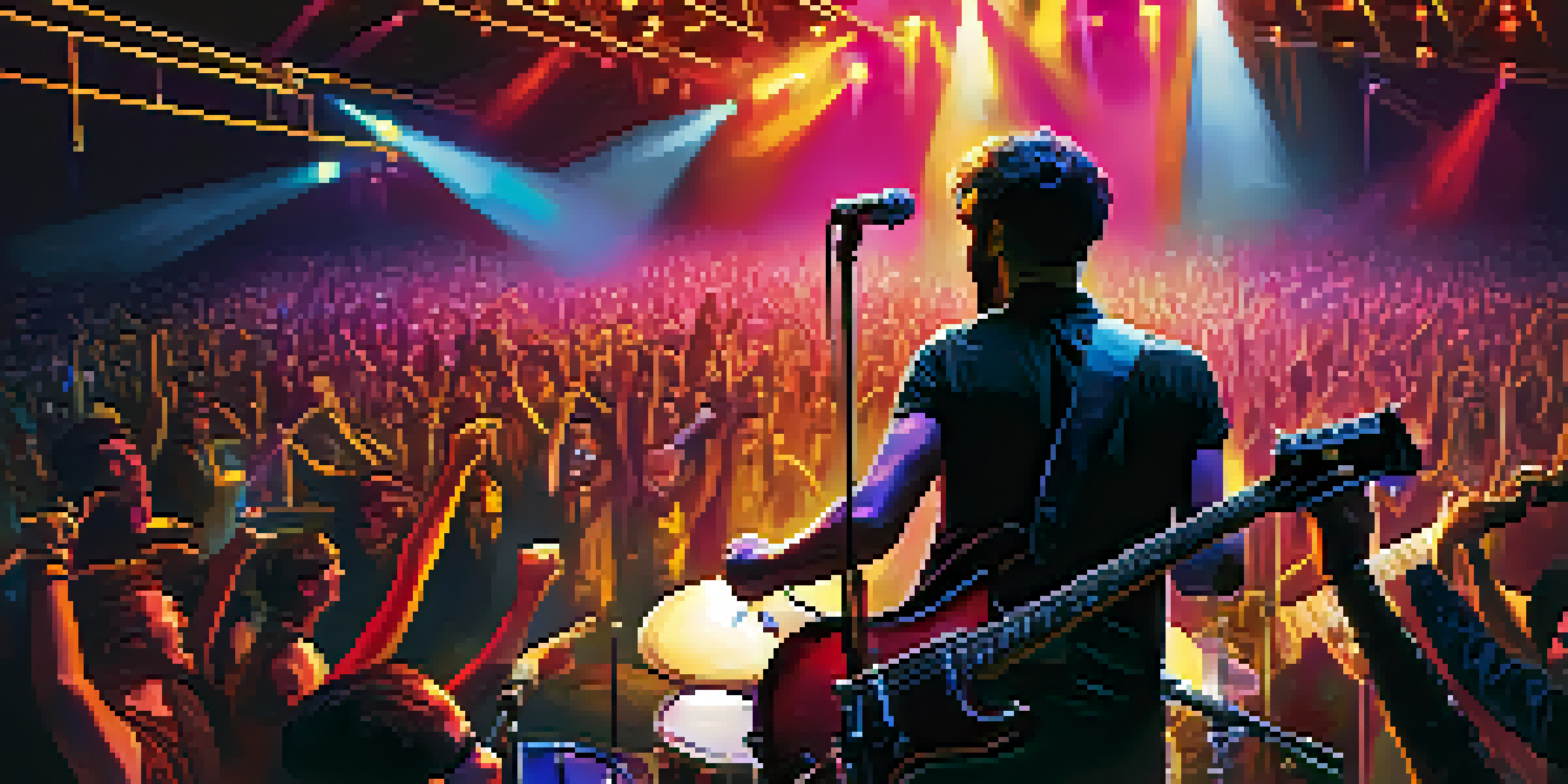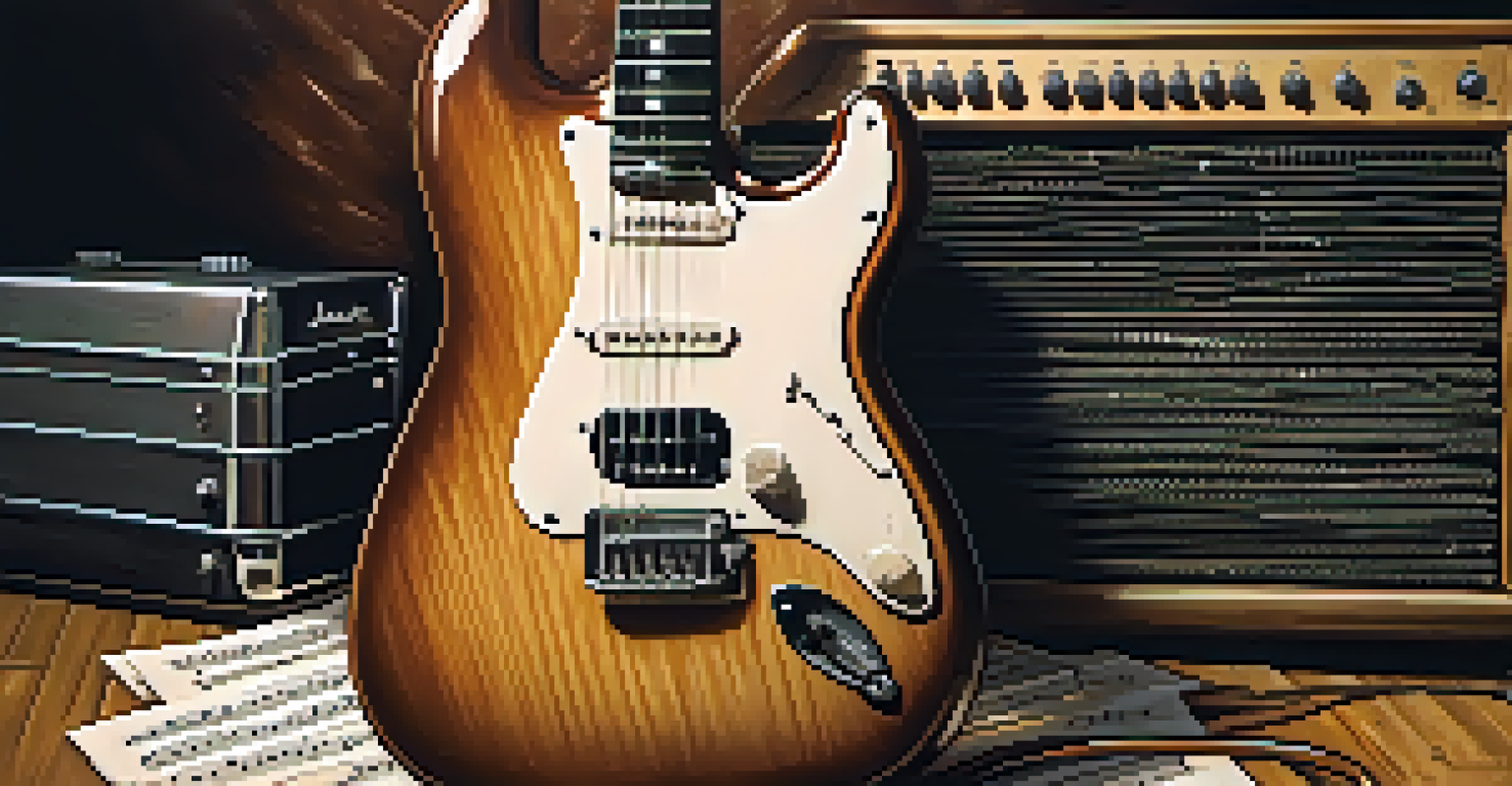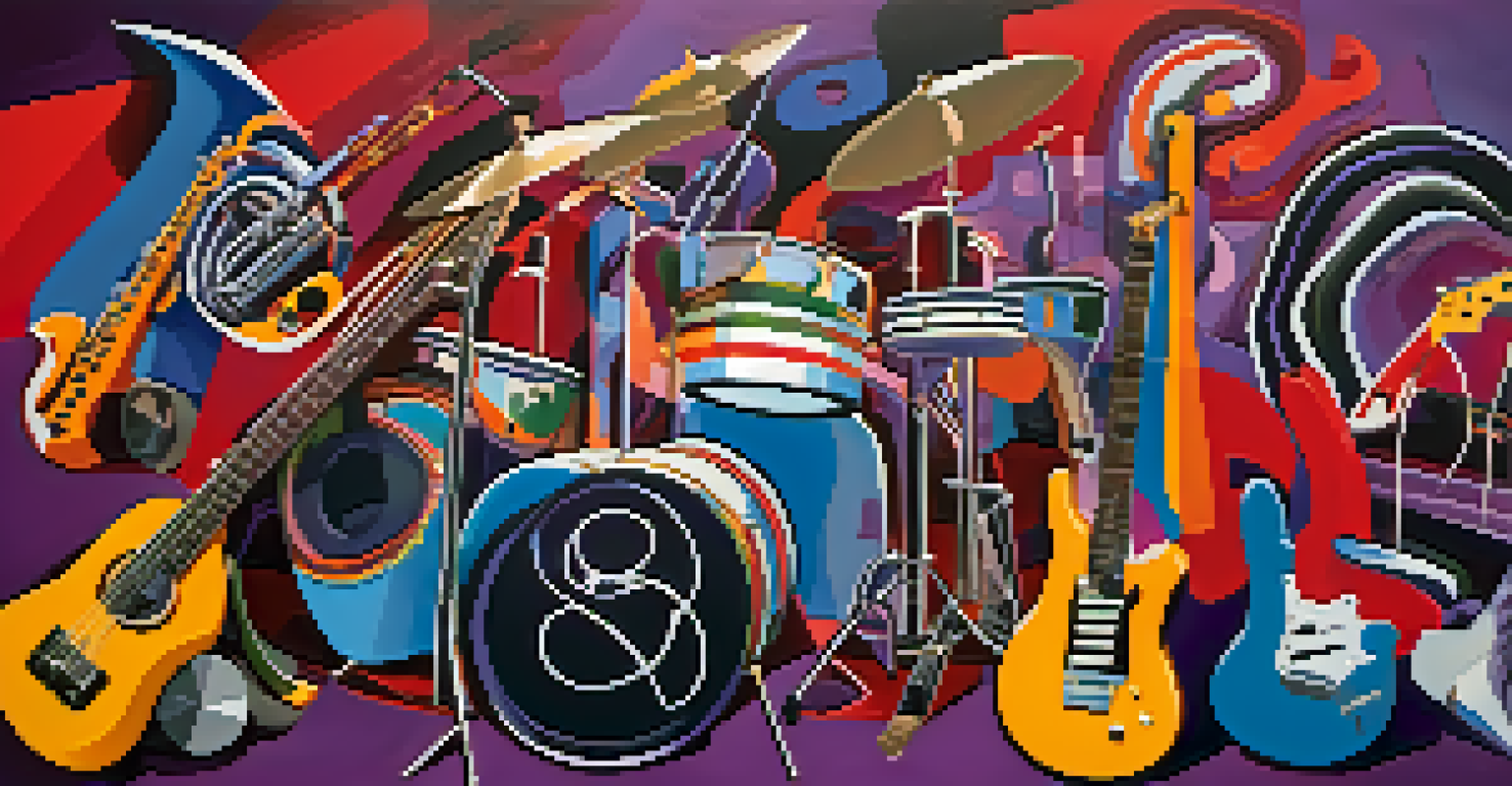Alternative Rock: Defining Characteristics and Cultural Impact

What is Alternative Rock? An Overview
Alternative rock, often known simply as 'alt-rock,' emerged in the 1980s as a distinct genre that challenged mainstream music norms. It encapsulates a wide range of sounds and styles, often blending elements from punk, post-punk, and new wave. This genre is characterized by its diversity, allowing for experimental approaches to songwriting and instrumentation.
Alternative rock is about taking risks and not being afraid to express yourself.
One of the defining features of alternative rock is its focus on authenticity and individuality. Artists often express personal and sometimes introspective themes in their lyrics, which resonate deeply with listeners. This emphasis on genuine expression has helped alternative rock maintain a loyal fanbase over the decades.
From its roots in underground scenes to its mainstream success, alternative rock has continually evolved. Bands like R.E.M., Nirvana, and Radiohead have paved the way, showcasing the genre's ability to adapt while retaining its core values. This evolution reflects the genre's rich tapestry, making it a fascinating subject to explore.
Key Characteristics of Alternative Rock Music
Alternative rock is known for its varied soundscapes, often incorporating unconventional instruments and arrangements. Unlike mainstream rock, which may prioritize catchy hooks and polished production, alternative rock is more experimental. This allows for a broader range of emotional expression, from the raw energy of punk to the haunting melodies of shoegaze.

Lyrically, alternative rock often delves into themes of alienation, identity, and social issues, resonating with a generation seeking connection through music. Bands frequently challenge societal norms and expectations, using their platforms to voice dissent and provoke thought. This lyrical depth sets alternative rock apart, inviting listeners to engage with the music on multiple levels.
Alternative Rock's Diverse Sound
Alternative rock blends elements from various genres, allowing for a wide range of emotional expression and innovative songwriting.
Another key characteristic is the genre's DIY ethos, which encourages artists to produce their music independently. This spirit of independence fosters creativity and innovation, allowing for a more personal connection between the artist and the audience. It’s this blend of artistic integrity and raw sound that continues to define alternative rock today.
Cultural Impact of Alternative Rock in the 1990s
The 1990s were a pivotal decade for alternative rock, marking its transition from the underground to mainstream prominence. Bands like Nirvana and Pearl Jam brought alternative sounds to the forefront, influencing an entire generation of musicians and fans. This surge in popularity not only changed the music industry but also reshaped cultural landscapes globally.
Music is a safe kind of high, and it can bring you back to life when you need it most.
During this time, alternative rock became synonymous with youth rebellion and counterculture. Songs often addressed issues such as disillusionment and societal pressures, resonating with young listeners navigating a rapidly changing world. This connection fostered a sense of community among fans, who found solace and understanding in the music.
Additionally, the rise of alternative rock paved the way for a diverse array of subgenres, including grunge, indie rock, and emo. Each of these styles contributed to the genre's rich tapestry, allowing artists to explore various sounds and themes. The cultural impact of this era continues to be felt, with many contemporary artists drawing inspiration from the alternative rock movement.
Influential Alternative Rock Bands and Artists
Throughout its history, alternative rock has produced numerous influential bands and artists who have left an indelible mark on the music scene. Groups like R.E.M. and The Smiths set the stage in the '80s, blending introspective lyrics with innovative sounds. Their influence can still be heard in many contemporary artists today.
In the '90s, bands like Nirvana, Radiohead, and Weezer redefined the genre, each bringing their unique flair to alternative rock. Nirvana's raw energy and emotional honesty captured the angst of a generation, while Radiohead's experimental approach pushed the boundaries of what rock music could be. Their legacies continue to inspire new generations of musicians.
Cultural Impact in the 1990s
The 1990s marked a significant shift for alternative rock as it transitioned to mainstream popularity, influencing youth culture and spawning diverse subgenres.
More recently, artists like Florence + The Machine and Arctic Monkeys have emerged, blending alternative rock with other genres to create fresh and engaging sounds. This ongoing evolution showcases the genre's adaptability and relevance in today’s music landscape, proving that alternative rock will continue to influence future artists.
The Role of Music Videos in Alternative Rock
Music videos have played a significant role in the promotion and evolution of alternative rock, especially during the rise of MTV in the 1980s and '90s. These visual interpretations of music allowed artists to express their creativity while reaching wider audiences. Iconic videos from bands like Nirvana and Pearl Jam not only showcased their music but also conveyed powerful messages.
The art of storytelling through music videos became a hallmark of alternative rock, often reflecting the themes present in the songs. For example, the surreal and thought-provoking visuals in Radiohead's 'Just' complement the song's themes of alienation and societal pressure. This synergy between audio and visual elements enhances the overall impact of the music.
In the digital age, platforms like YouTube have transformed how fans engage with alternative rock. Artists can now share their videos directly with audiences, fostering a more personal connection. This accessibility has allowed for a resurgence of interest in the genre, as new fans discover classic alternative rock videos alongside contemporary releases.
The Evolution of Alternative Rock in the 21st Century
As we moved into the 21st century, alternative rock continued to evolve, incorporating influences from various genres like electronic, hip-hop, and pop. This blending of styles has led to the emergence of new subgenres, such as indie pop and synth-rock, which maintain the core ethos of alternative rock while pushing creative boundaries. Artists like Tame Impala and Twenty One Pilots exemplify this evolution, attracting diverse audiences.
The rise of social media has also transformed the way alternative rock artists connect with their fans. Platforms like Instagram and TikTok allow musicians to share their creative processes, engage with listeners, and promote their work in innovative ways. This direct interaction fosters a sense of community, allowing fans to feel more involved in the music they love.
Future Trends in Alternative Rock
As the genre evolves, alternative rock continues to merge with other styles and address contemporary issues, ensuring its relevance in the modern music landscape.
Despite these changes, the essence of alternative rock remains intact. The genre continues to prioritize authenticity and individuality, emphasizing the importance of personal expression. As alternative rock adapts to new trends and technologies, it retains its relevance in a constantly shifting musical landscape.
The Future of Alternative Rock: Trends and Predictions
Looking ahead, the future of alternative rock appears bright, with emerging artists constantly redefining the genre. The blending of genres is likely to continue, creating exciting new sounds and pushing the boundaries of traditional rock music. This fusion allows artists to explore diverse influences, ensuring that alternative rock remains fresh and innovative.
Moreover, the growing importance of mental health awareness is likely to shape the lyrical themes of future alternative rock music. As artists share their personal struggles and triumphs, listeners may find even deeper connections to the music. This trend can foster a greater sense of community among fans who resonate with these themes.

As technology continues to advance, we can expect new ways for artists to connect with their audiences. Virtual concerts and interactive experiences could become commonplace, allowing fans to engage with their favorite alternative rock bands in unique ways. The genre's adaptability and resilience suggest that alternative rock will continue to thrive and inspire for years to come.